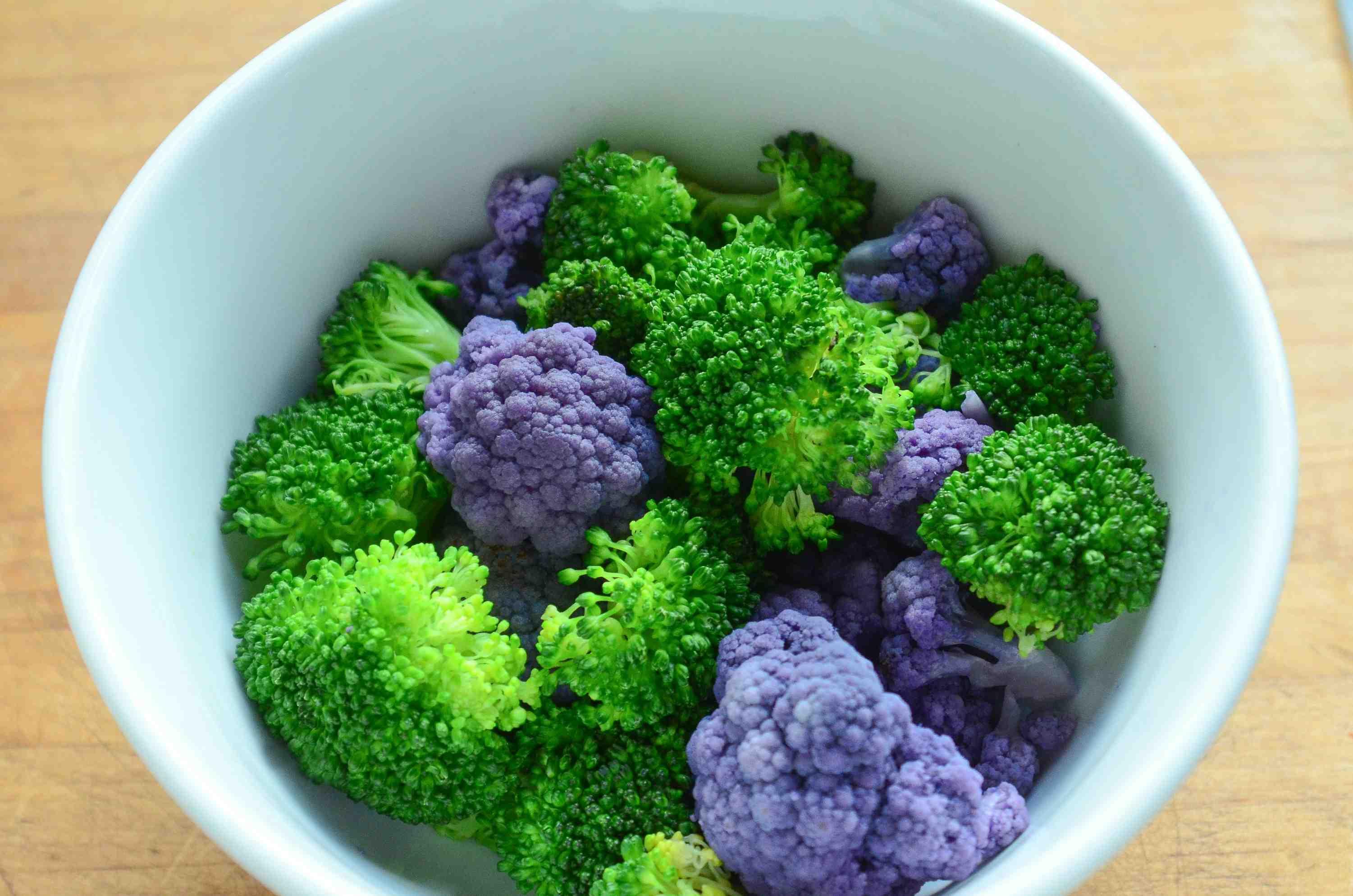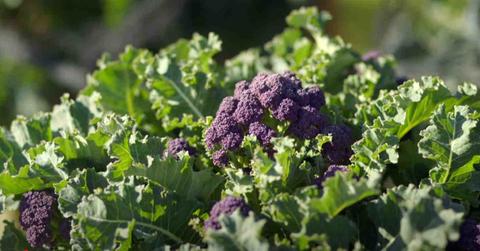If Your Broccoli Is Turning Purple, Does That Mean It’s Fresh or Funky?
"Visual quirks like a purple tint are normal."
Published July 30 2025, 1:00 p.m. ET
Broccoli and its varieties are enjoyed by consumers the world over, and finding a head of broccoli at just the perfect time at your local farmer's market means a delicious meal to come. However, if you start to notice your broccoli turning purple, is that a sign your broccoli may be part of a revolting food recall — or is it still safe to eat?
Seeing your perfectly deep green colored broccoli beginning to change colors is understandably jolting.
If your beloved broccoli is turning purple, here's whether or not you should still proceed to cook and eat the broccoli or dispose of it.

Why is my broccoli turning purple?
First, if your broccoli appears like it does in the picture above, you will be relieved to know that the purple vegetable isn't actually broccoli at all; it's purple cauliflower, which belongs to the same family as broccoli and the white cauliflower you're accustomed to seeing. The purple pigmentation, according to Specialty Produce, is the result of long-term crossbreeding and a high concentration of anthocyanin.
If parts of your broccoli are turning purple, though, don't discard it just yet.
“Purple broccoli often catches people off guard. It’s easy to assume it’s mold or a sign the veg is going off, but in most cases, it’s actually just the plant reacting to cold weather or its own genetics,” Food Hygiene Expert Mark McShane explained.
Indeed, if the broccoli florets or stalks are beginning to turn purple, this isn't necessarily a sign that the vegetable is doomed to become the next organic material to add to your compost.
"The purple tinge is caused by anthocyanins, a natural antioxidant pigment also found in blueberries and red cabbage," McShane said in a release via email. "Cold temperatures, especially during harvesting or transport, can trigger this reaction. Certain broccoli varieties are also more likely to show this purple hue – even if they’re technically 'green' broccoli."
According to the University of California (UC) Agriculture and Natural Resources website, one such instance of broccoli appearing purple was due to an unseasonably warm and dry climate.
"Sun, heat, and Romanesco [broccoli] don't mix. And when they do mix, they create purple!" according to the UC website. "The purple color is caused by anthocyanin, a harmless, water-soluble pigment that is exacerbated by sun exposure. When the developing heads are exposed to sun and heat, they can turn purple."
As McShane attested, "From a food safety point of view, it’s perfectly safe to eat. In fact, the purple colouring might indicate a higher level of antioxidants, which can be beneficial for health."
However, to be safe, you should also be aware that signs that broccoli is turning purple are a sign that the vegetable is decaying.
The key signs your broccoli has genuinely gone bad include a slimy or soft texture, yellowing or grey discoloration, and a strong, unpleasant smell.
"Visual quirks like a purple tint are normal. The danger comes when broccoli becomes soft, watery, or smelly – that’s when you should throw it away,” McShane said.
